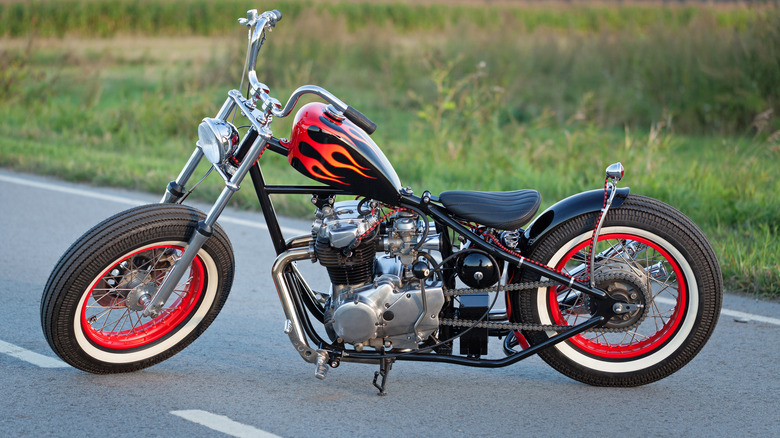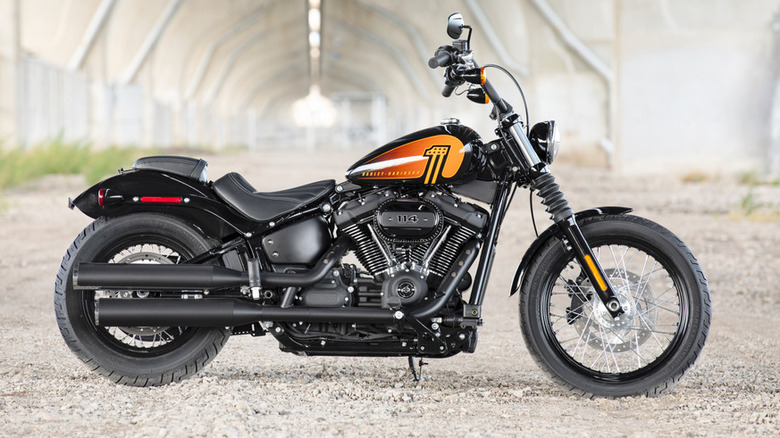What Is A Bobber Motorcycle (And What Makes It Special)?
When the bobber style entered the motorcycle scene in the 1920s, it definitely subscribed to the philosophy that less is more. Born out of necessity to add speed and modernize the appearance of Harley-Davidson's aging Model J, hot rodders removed anything that wasn't purely necessary for the bike to function. After all, removing weight from a vehicle is the cheapest way to improve performance. That typically included the front fender, headlight, mirrors, chrome trim, and substituting the seat with a smaller one. But the defining characteristic and namesake of the bobber was its cut-down rear fender.
Motorcycle fenders weren't the only thing getting bobbed — the name is derived from "bob" which was also a slang term for a popular, short hairstyle for ladies. For a time, bobbers were mostly limited to hardcore motorcycle racers, but after WWII, the look exploded into the mainstream. The popularity of motorcycles in general surged after the war and returning soldiers wanted to emulate the lighter and sportier bikes they had seen overseas during service. Many of these young folks were well equipped to make the modifications, having gained mechanical aptitude in the armed forces.
Occasionally, the motorcycle frame itself was hacked to lower the seat height, but most bobbers were modified more simply using only hand tools and homespun ingenuity. The original Bobber trend was exemplified in the 1953 film "The Wild One" starring Marlon Brando, which is an excellent snapshot of 1950s motorcycle culture. Brando's rival in the film rode a Harley-Davidson bobber.
The bobber got usurped by the chopper
As the 20th century wore on, a new motorcycle trend began to displace the bobber — the chopper. While the bobber was typically modified with weight reduction and performance in mind, the chopper actually sacrificed performance in favor of radical looks. Chopper frames were drastically altered or replaced altogether, oftentimes with no rear suspension. The front end featured a modified steering angle, long forks, and an oversized front wheel. While the choppers may have enjoyed a long, raked appearance, the cartoonish front fork made for poor handling characteristics and a huge turning radius. Still, films like 1969's "Easy Rider" cemented the chopper as the new king of cool.
That wasn't the end of the bobber, though. The early 2000s witnessed a huge retro resurgence, from cars like the PT Cruiser and Chevy SSR to a revival in swing music. In response, major manufacturers like Triumph, Harley-Davidson (above), and Indian introduced mass-produced bobbers to the marketplace, some of which are still available for purchase today.
Of course, they aren't 100% true bobbers because many of the items that were removed from bikes 60 years ago, such as lights and mirrors, are necessary nowadays to make a vehicle street-legal. In fact, the modern crop of bobbers even has a diminutive front fender, presumably to keep a new generation of fussier riders from getting too dirty from tire-driven mud, rocks, and water. We wonder what the biker gangs in "The Wild One" would think about that.

